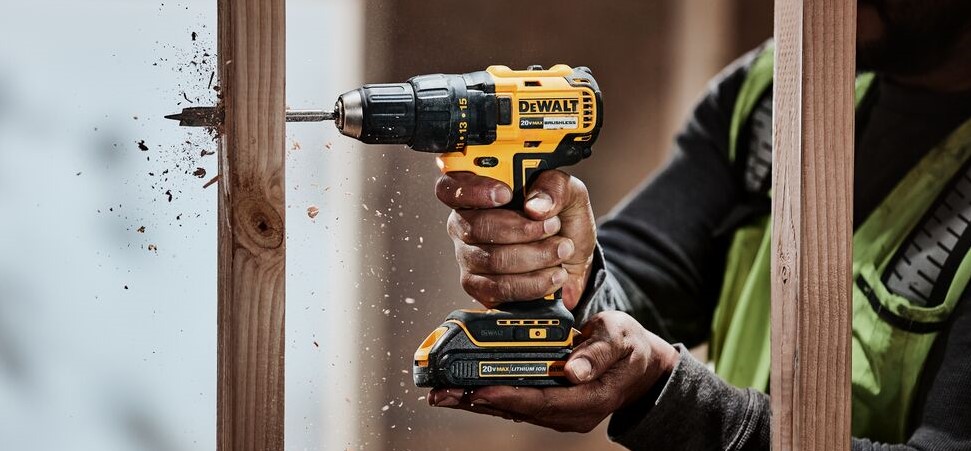Drilling holes in shells can transform them into unique pieces of art or functional items. Whether you’re crafting jewelry or creating decorative accents for your home, knowing how to drill shells properly is essential. With the right techniques and tools, you can achieve clean, precise holes without damaging the delicate material.
Tools Needed For Drilling Holes
Drilling holes in shells requires specific tools to ensure precision and minimize damage. Selecting the right equipment enhances your experience and results.
Types of Drills
- Dremel Tool: Ideal for detailed work, a Dremel tool offers variable speed settings and attachments designed for delicate materials.
- Rotary Drill: For larger jobs, a rotary drill provides robust power and compatibility with various drill bits.
- Hand Drill: A simple hand drill allows for control and is suitable for smaller shells, providing finesse in the drilling process.
Drill Bits for Shells
- Diamond-Tipped Bits: These bits excel in cutting through hard surfaces, making them perfect for shells. Their durability prevents chipping and cracking.
- HSS Bits: High-speed steel bits are effective for soft shells, offering a clean hole without excessive force.
- Spade Bits: For larger holes, spade bits provide quick drilling but require careful handling to avoid damaging the shell.
Ensure you choose the right tools and bits to achieve clean results and preserve the beauty of your shells.
Preparing The Shell
Preparing the shell is a crucial step for successful drilling. Proper preparation ensures cleanliness and protects the shell’s integrity during the drilling process.
Cleaning The Shell
Cleaning the shell removes debris, dirt, and residues that can interfere with drilling. Rinse the shell under running water to remove loose particles. Use a soft brush to scrub the surface gently. For stubborn dirt, soak the shell in a mild soapy solution for a few minutes before brushing. After cleaning, rinse thoroughly and allow the shell to dry completely before proceeding with drilling.
Selecting The Right Shell
Selecting the right shell impacts both the aesthetics and functionality of your project. Choose shells that have a smooth surface and a suitable thickness; thicker shells withstand drilling better. Look for intact shells without cracks or significant blemishes. Common options include conch shells, clamshells, and cowrie shells, which accommodate varying designs effectively. Check the size based on your project’s requirements, ensuring the shell fits your intended use.
Drilling Techniques
Drilling holes in shells requires precision and care. Utilizing proper techniques enhances the outcome while preserving the shell’s beauty.
Marking The Hole Position
Marking the hole position ensures accurate drilling. Use a fine-tip marker or a pencil to create a clear dot on the shell’s surface where you’ll drill. Consider the design and function of the item you’re creating. Position marks should be spaced evenly and away from the edges to prevent cracking. Double-check the placement before proceeding.
Drilling Process
The drilling process involves specific steps for optimal results.
- Secure the Shell: Place the shell on a stable surface or hold it firmly with your non-dominant hand. Use a clamp or a soft cloth to prevent slipping.
- Select the Correct Drill Bit: Choose a drill bit that suits the shell type and intended hole size. Diamond-tipped bits work well for harder shells, while high-speed steel bits are better for softer varieties.
- Adjust Drilling Speed: Set your drill to a low speed. This minimizes heat and friction, reducing the risk of shell damage.
- Begin Drilling: Align the drill bit with the marked dot and apply gentle pressure. Start with light pressure, gradually increasing as the bit penetrates the shell.
- Keep Hydrated: If using a Dremel or rotary tool, consider a coolant or water to keep the area cool. This protects the shell from heat damage.
- Clean the Hole: After drilling, remove any debris from the hole with a small brush or compressed air. Ensure the edges are smooth and free from sharp fragments.
Follow these steps carefully for clean, professional results in drilling holes in shells.
Safety Precautions
Prioritizing safety during the drilling process is essential. The delicate nature of shells can pose risks, so taking proper precautions protects both you and the materials.
Eye Protection
Always wear safety goggles when drilling into shells. Bits can break or shatter, sending small fragments flying. Additionally, grit and dust produced during the drilling process can irritate your eyes. Using goggles minimizes these risks, ensuring a safer working environment.
Handling Shells
Handle shells with care to avoid injury and damage. Use padded gloves to protect your hands and provide a better grip. Secure the shell firmly but gently in a vise or clamp to prevent slipping while drilling. Avoid excessive force, as shells can crack. Proper handling maintains both your safety and the integrity of the shell.
Conclusion
Drilling holes in shells opens up a world of creative possibilities. By following the right techniques and using the appropriate tools you can transform simple shells into beautiful jewelry or unique home decor items.
Remember to prioritize safety and take your time during the drilling process. With practice and attention to detail you’ll achieve stunning results while preserving the natural beauty of the shells. Enjoy your crafting journey and let your creativity shine through every piece you create.

Hi, I’m Md Rofiqul, a gardening enthusiast who loves spending time in the garden and backyard. I enjoy caring for plants, growing flowers and vegetables, and creating a green space that feels peaceful and refreshing. Gardening is more than just a hobby, it’s a passion that connects me to nature and brings joy to my daily life. Living with plants inspires me to embrace simplicity, patience, and sustainability while making every day more colorful and rewarding.
